Newton's Laws 2
- A heavy object is lifted by a helicopter to a higher place. The helicopter is moving vertically upwards. The graph below shows the resultant force on the object as a function of time.
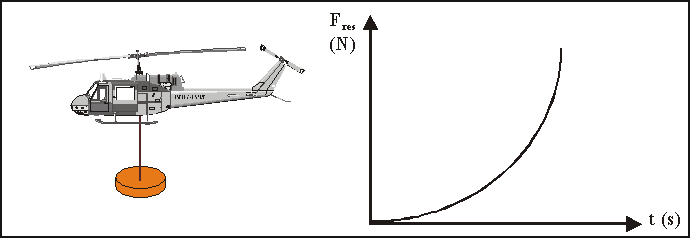
The acceleration of the helicopter moving upwards …
(A) increases
(B) decreases
(C) stays constant
(D) is zeroCorrect = A
- Newton's second law of motion states:
(A) For every action is an equal and opposite reaction.
(B) A body will remain at rest unless acted upon by an unbalanced force.
(C) A body will move with uniform motion in a straight line, unless acted upon by an unbalanced force.
(D) The force acting on a body equals the rate of change of momentum.Correct = D
Questions 3 and 4 refer to the diagram below:

- In which case will the object have the greatest acceleration?
(A) A
(B) B
(C) C
(D) DCorrect = B
- In which case will the object have the least acceleration?
(A) A
(B) B
(C) C
(D) DCorrect = A
- A mass \(M,\) attached to a piece of string \(OM,\) is whirled round over a person's head in a horizontal circle. At the position shown in the diagram below, the string suddenly breaks. In which direction does the mass \(M\) move after the string breaks?
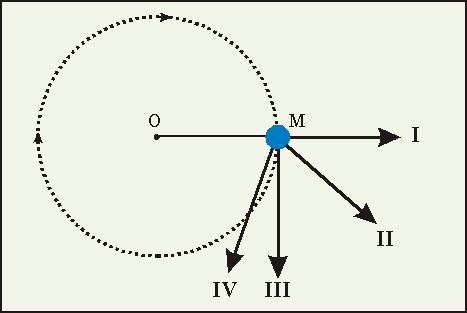
(A) The mass \(M\) moves towards direction I
(B) The mass \(M\) moves towards direction II
(C) The mass \(M\) moves towards direction III
(D) The mass \(M\) moves towards direction IVCorrect = C
- Two forces of magnitude \(3\; \text N\) and \(4\; \text N\) respectively act on a body. The maximum possible magnitude of the resultant of these forces is
(A) \(1\; \text N \)
(B) \(5\; \text N\)
(C) \(7\; \text N \)
(D) \(12\; \text N\)Correct = C
Questions 7 and 8 refer to the diagram below:
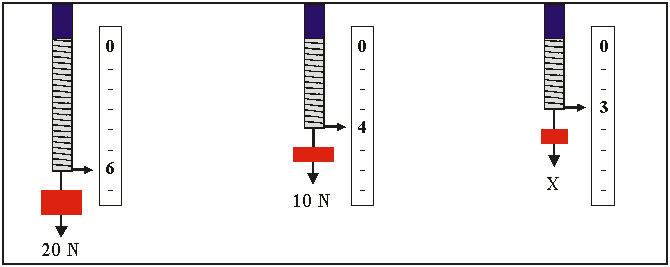
- If all the weights are removed from the springs, which mark on the scale will the pointer indicate?
(A) zero
(B) 1.0
(C) 2.0
(D) 2.5Correct = C
- What is the weight of \(X\)?
(A) \(-1\; \text N \)
(B) zero
(C) \(3\; \text N\)
(D) \(5\; \text N\)Correct = D
- A force \(F\) is used to pull a body, which is suspended from a string, to one side as shown below. The body is in equilibrium.
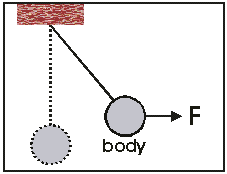
Which of the following vector diagrams represents all the forces acting on the body?

(A) A
(B) B
(C) C
(D) DCorrect = D
- A constant resultant force acts on a body, which moves from rest in a straight line. Which one of the following graphs shows the relationship between momentum \((p)\) of the object and the time \((t)\) the force is applied?
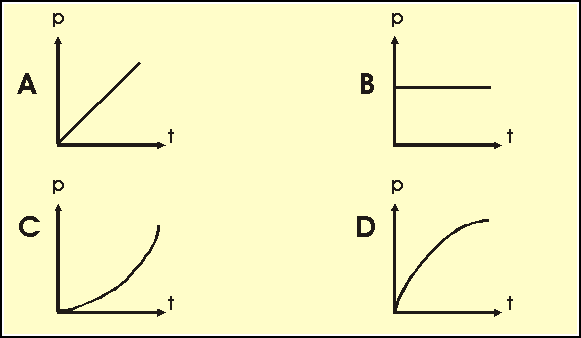
(A) A
(B) B
(C) C
(D) DCorrect = A
- Two objects, \(A\) and \(B,\) of masses \(m\) and \(2m\) respectively are placed a distance \(x\) from their centres. \(A\) exerts an attractive force \(F\) on \(B\) to the left as shown in the diagram below.
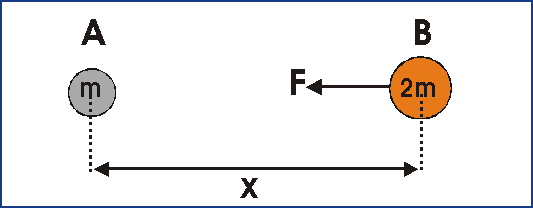
What force does \(B\) exert on \(A\)?
(A) \(½\; F\) to the right
(B) \(F\) to the right
(C) \(2\; F\) to the right
(D) \(3\; F\) to the rightCorrect = B
- A horizontal force of \(25\; \text N\) is exerted on a box (mass \(10\; \text {kg}\)), as shown below. The box accelerates at \(2.0\; \text{m.s}^{-2}.\) What is the magnitude of the frictional force acting between the box and the floor?

(A) \(0.0\; \text N\)
(B) \(2.5\; \text N\)
(C) \(5.0\; \text N\)
(D) \(10.0\; \text N \)Correct = C
- From which of the following may the acceleration of a body be calculated?
(A) The change in position of a body when a resultant force acts on it.
(B) The rate of change in position of a body with time when a resultant force acts on it.
(C) The change in velocity of a body when a resultant force acts on it.
(D) The rate of change in velocity of a body with time when a resultant force acts on it.Correct = D
- A furniture truck is moving along a level road at constant velocity. An object drops from the mid-point of the ceiling inside the truck. Where on the floor will the object land?

(A) One cannot say without knowing the velocity of the truck
(B) Exactly on the point below the midpoint of the ceiling
(C) Ahead of the point exactly below the midpoint of the ceiling
(D) Behind the point exactly below the midpoint of the ceilingCorrect = B
- A car initially moving to the right, slows down as the brakes are applied. Which of the following gives the correct direction for the car's velocity \(v,\) acceleration \(a\) and the resultant force \(F\) acting on the car while it is slowing down.
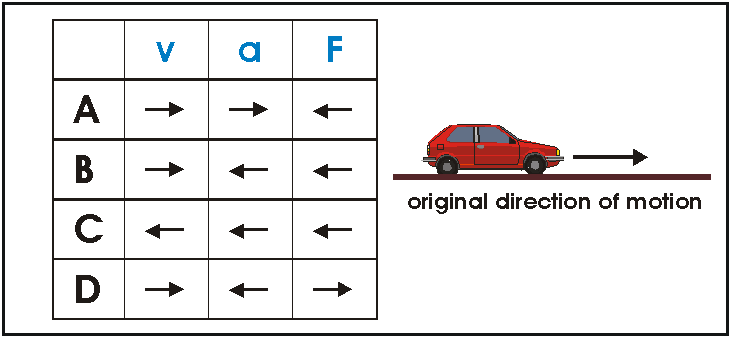
(A) A
(B) B
(C) C
(D) DCorrect = B










